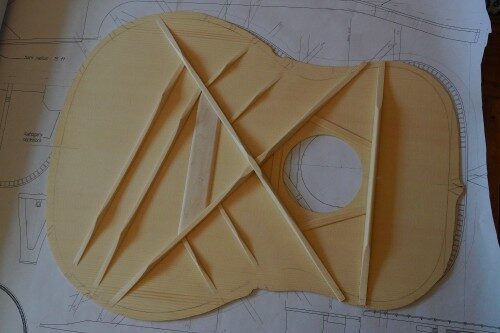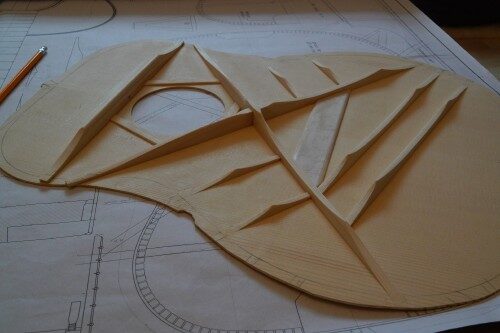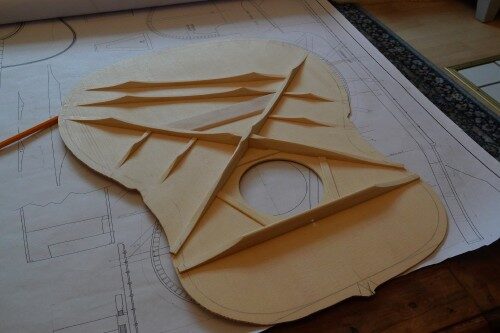There is much magic spoken about ‘voicing the top’ – Carefully paring away wood from the braces followed by tapping the top and listening with a cocked ear and nodding sagely (with apologies to all the proper luthiers…). I’d read as much as I could about the process, watched umpteen Youtube videos with my best headphones on, but I wasn’t really any wiser. A few things struck me:
- There are very few people that can convincingly describe what they’re trying to achieve (e.g. Dana Bourgeois. The Cumpiano book just offers something along the lines of “you’ll get the hang of it eventually”)
- A lot of people talking about it on Youtube are only making their 1st or 2nd guitar.
- None of the major manufacturers seem to pay any attention to the “tap tone” of the top as they carve the braces for a $10,000 custom shop guitar.
- People make guitars out of all sorts of scrap wood in all sorts of configurations, and most of them actually sound OK at the end of it.
- The disaster scenario is weakening the braces by carving away too much and having the whole thing fold into a pile of matchwood, or the top belly up after a few months
My attitude gradually became more pragmatic, and I stopped “needing to know”. I decided that as long as I followed the plans, I should end up with something that sounds (at least) OK, and maybe even decent.
Eventually, the phase of the moon was right, and the mojo was high, so I decided to get on with it.
I was only ‘painting by numbers’, so my aim was to match the dimensions and shapes in the plans as closely as possible and make it look as neat as I could which got meWell, the phase of the moon was right, and the mojo was high, so I decided to work on the soundboard bracing.
I am only ‘painting by numbers’ here, so my aim was to match the dimensions and shapes in the plans and make it look as neat as I could.
I eventually decided that this was “it”:




The top is still ~~10mm over sized (the pencil outline is roughly right) and the transverse brace and front ends of the X braces need trimming.
I did try and record audio out of curiosity and for my own future reference. Unfortunately, after I’d recorded the ‘before’ and started hacking away, my little Zoom recorder died, so the after was recorded with my camera mic.
For those that are interested, here they are – 10 taps in the bridge area while the top was suspended on a finger through the sound hole.
Before:
After:
